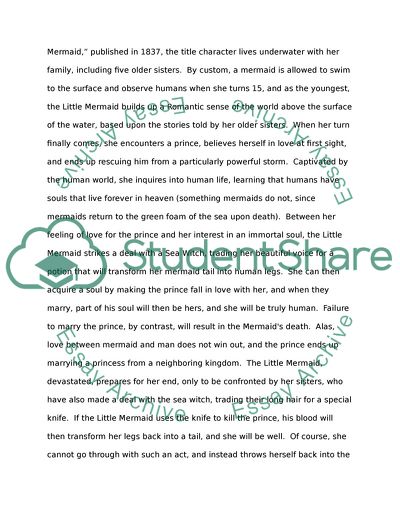Cite this document
(The Little Mermaid as Cultural Symptom Essay Example | Topics and Well Written Essays - 1750 words, n.d.)
The Little Mermaid as Cultural Symptom Essay Example | Topics and Well Written Essays - 1750 words. https://studentshare.org/culture/1759922-junior-seminar
The Little Mermaid as Cultural Symptom Essay Example | Topics and Well Written Essays - 1750 words. https://studentshare.org/culture/1759922-junior-seminar
(The Little Mermaid As Cultural Symptom Essay Example | Topics and Well Written Essays - 1750 Words)
The Little Mermaid As Cultural Symptom Essay Example | Topics and Well Written Essays - 1750 Words. https://studentshare.org/culture/1759922-junior-seminar.
The Little Mermaid As Cultural Symptom Essay Example | Topics and Well Written Essays - 1750 Words. https://studentshare.org/culture/1759922-junior-seminar.
“The Little Mermaid As Cultural Symptom Essay Example | Topics and Well Written Essays - 1750 Words”. https://studentshare.org/culture/1759922-junior-seminar.


